Hunters used to have it pretty rough when it came to tree stands. They were often large and heavy pieces of gear that featured a long ladder. These ladder stands were really the only option, and they were a major pain in the butt to take through thick woods and heavy brush.
Then along came climbing stands. Inventive hunters had taken to building their own style of climbing stand with combinations of metal, wood, and rope ladders. The industry observed the ingenuity and commercialized the modern tree stand.
Although climbing stands have been in use for decades, many people are still somewhat turned off by them. In fact, they can seem intimidating and confusing at first glance. Today, let’s break that stigma and go over how to use this ingenious product.
A Quick Word on Tree Stand Choice
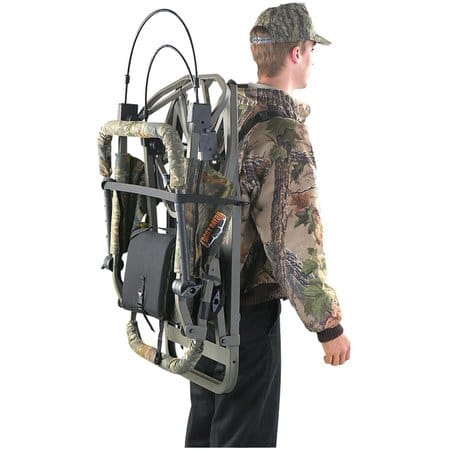
The reason we like climbing stands the most is because ladder stands are too bulky and too heavy. Just beware of outfitting your tree stand with every extreme feature known to man. If you do, you may end up with something barely lighter than a ladder stand! Purpose defeated.
If you are hunting in an area with thin brush coverage, a heavy stand isn’t too difficult to carry around. If you are hunting in a thick, nasty, pain in the ass area then a heavy stand will have you cursing all the way to your chosen location!
In the end, it is your stand and you should add as many features as you want. However, it is extremely important to consider the area where you go hunting. In fact, it should be the deciding factor when faced with the choice of maximizing comfort or maximizing use.
Make sure to read our buying guide that will help you pick out the best climbing tree stand.
The Tree
Choosing a tree is another important detail. Frequently, this can be the most frustrating part of setting up a stand. Many times you find an area with tons of deer signs and excellent fields of fire, but the right tree is nowhere to be seen.
Choosing the right tree isn’t only going to get you out of the deer’s line of sight, it will also make sure you come home from the hunt in one piece!
The following are our personal tips on how to choose a tree that will increase your rate of success and safety:
1. You want a tree that is thick at the bottom and the top. You don’t want the width of the tree to narrow drastically as you climb, large diameter trees work great. You also need to determine what height you need to be to make your shots work. Rarely will the right tree and right area align, so you may need to trim branches as you move upwards. That is why every serious hunter should have a pocket saw along!
2. If you choose a tree that loses width as you climb, you will have to adjust to compensate for the angle. That goes double for bow hunting! To make up for the thinner portion, angle your climbing stand slightly upwards to remain level.
This upward angle will keep you from being stuck leaning forwards and facing downwards. However, you should have this adjustment figured out before you begin your climb. If you compensate too little, you may have to climb back down and try again.
Unfortunately, there is no hard and fast measurement to use. Calculating the perfect angle from the ground is something you can only learn through experience. So if you fail a few times, don’t worry. You have to earn your buck like all the hunters that have come before.
3. You want a tree with some gnarly bark. The thicker and rougher the better. We recommend staying away from beech trees at all costs. They tend to be much more slippery due to the nature of their bark.
That being said, pine trees are a great choice! They are not too rough to climb, and the bark is soft. This allows the teeth of your stand to really dig in and feel secure. Pine trees also stay pretty uniform in terms of width.
In addition to pine trees, we also recommend oaks. These trees are rough and tough! They can be a pain to dig into, but once you are in you are staying there. The bark does not allow for much shifting. Also, acorns are like popcorn to deer so finding an oak is almost cheating!
Getting Started
You have the perfect tree and the perfect stand. You found a good spot, you have your hand saw, and you are ready to start climbing. Maybe you are at home practicing, which is a good way to begin.
Regardless, there are a few safety precautions you should take.
1. The first is using a safety strap to connect you to the tree. These straps glide up the tree with you and attach around your waist. They are a must-have for a safe hunt! Also, your weapon should also be slung to you or the top of the climbing stand.
2. You also need to connect the bottom of the tree stand to the top. Should you lose your footing, the floor can drop to the ground below if not properly secured to the top. If this happens, the only thing you can do is hope you aren’t too high to jump down.
The rope will save the stand, but its best to avoid this situation altogether. If it happens while you are setting up you may make a ton of noise trying to correct the issue. A lot of noise means lots of scared deer.
There are a few different methods you can use to connect the top and the bottom. Whichever method chosen should be relatively short. The rope should be long enough to move easily, but short enough that you will not fall far in case something goes wrong.
3. Lastly, you want a method to secure your feet to the bottom of the tree stand. This is a secondary safety feature to help prevent slips, and most climbing stands will have stirrups or a metal bar to use to secure your feet. Make sure your boots fit nice and snug in these areas.
Up The Tree, We Go!
To get up the tree and get your stand correctly positioned, we recommend the method known as the sit and climb. The sit and climb is as old as tree stands themselves. It’s safe, effective, and just a little slow. We think it’s well worth the trade-off in safety.
1. The first step is to dig the top and bottom of the stand into the tree. It is important to make sure you are high enough to get off the ground, but low enough to easily climb up and establish a sitting position.
2. Begin by standing at the bottom of the tree stand and gripping the top. To lock the stand into place, push it upwards a bit. Now, climb into the seat. Get ready, and use your feet to lift it from the tree and pull it under you.
3. At this point, push it slightly downwards to set the teeth. Stand up and push the top of the unit upwards, just high enough for your feet to reach the bottom of the stand when you sit. Make sure you move your security band up with you as you climb!
4. Along the way, you may need to cut branches to establish a good firing position. With a gun, this isn’t too difficult. With a bow, the range of motion needed is so great that this step is absolutely critical! Try multiple angles and ensure you have the ability to quietly and quickly take shots.
How High?
A big question we get is how high to climb. A lot of people associate higher with better, but that is not always the case. In fact, there isn’t really much of a difference up to a certain height. You also have to consider what kind of brush you are up against.
If you go too high in a dense area, you will be closing down fields of fire and observation. This is a situation where lower is better. Game can and has been killed at as low as 10 feet in thick forests. Remember, the goal is to get above the deer’s line of sight. No need to go further.
If hunting over a clear-cut, go about 20 feet up. This height is give or take depending on the fields of fire, limb placement, etc. You don’t need to touch the tops of clouds to get a deer, especially if you are nervous about heights. Take it slow, get comfortable, and be safe.
Climbing Tree Stands are for Everyone
Climbing stands are excellent must-haves for the modern hunter. You can scale up and down at your heart’s content, and the massive selection of stands offers something for everyone. Keep in mind that once you master a few basic principles, you will have mastered the whole system.

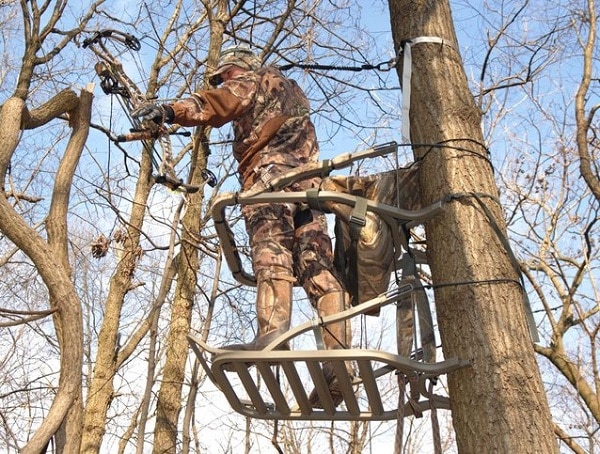
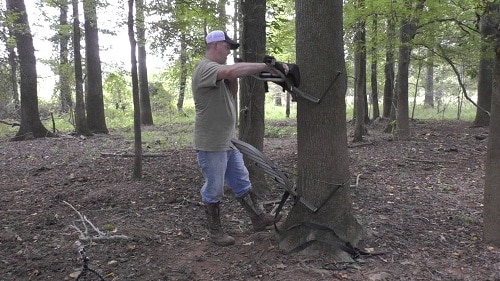
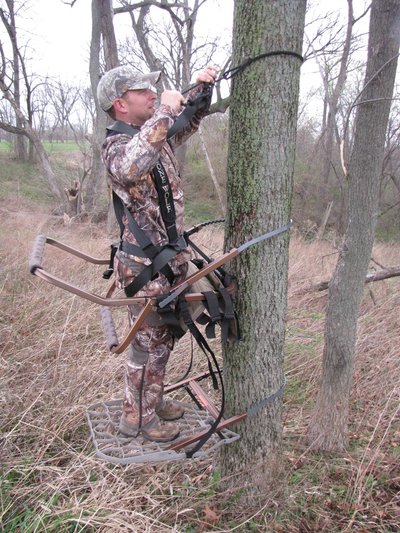
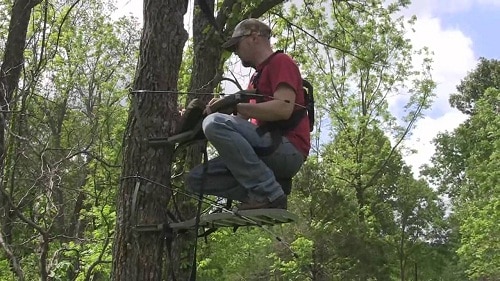
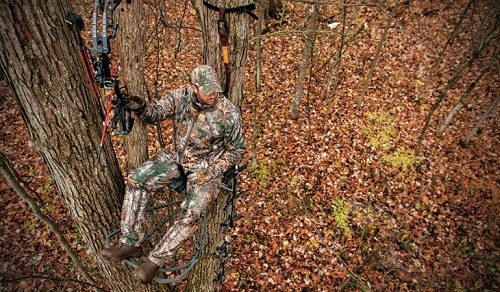




Comments are closed.